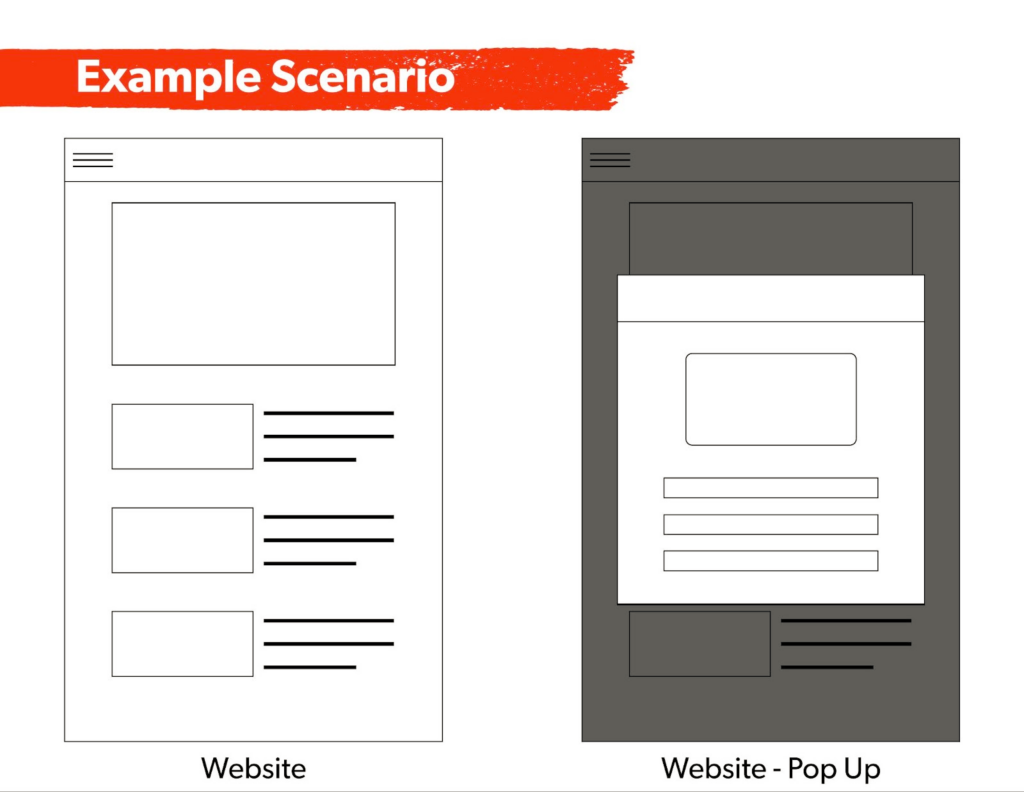Data flow, digital architecture, business models, departmental silos… what do all of these have in common? These represent structures inside of a business and are all comprised of people who interact with them on a daily basis. Many of these structures can differ from business to business.
We have even seen Company A have the same system structures as Company B, yet they both operate so uniquely.
This is not an issue.
The issue is when the heart of your company is not as healthy as it could be. The issue is when your data flow doesn’t match the systems you are currently using and leaving a whole lot of data out there with no resolve. Finding the sweet spot where the business reaches new levels and people feel included in that process is the golden ticket.
This article intends to highlight some areas of improvement that sometimes go misunderstood or noticed when dealing with the previously mentioned structures. Our goal in this article is to highlight business practices that help you get ready to go to the next level of your journey.
Help measure understanding of data flow with systems ensuring everything has been covered on your way in your company’s digital journey.
Contents
Data Flow: The hidden impact on team efficiency
When thinking about data migration, flow is as important if not the most important thing to consider in a business. Many hands touch this data. Time and time again we have seen that when new technology (systems) is introduced inside the walls of a business, a complete overview of the journey the data will touch is not taken into consideration, misunderstood, or misaligned. As a result, when the new digital design is implemented, two things happen.
Fear. The team’s chemistry and efficiency is weakening due to new systems replacing the staff or the illusion it will. Confusion due to new wine in old skins or the implementation was too quick to establish a good understanding of all it does.
Frustration. If you haven’t been on the other side of the table of a fellow colleague who is upset because of a push you and or your team made at night/early morning and it produced inconsistency in his/her work process, you are not living. I say that with some humor, but it happens. Sometimes it feels like the train has to be built while in motion.
Regardless of the situation, it is important to understand that the flow of data is key. The better the understanding of what information finds its place in the process of flow, and where it will end in the process, the better user experience your team will have.
Remember, while you may have a client purchasing the products you sell, you have another client you are servicing… that is your staff in other departments, silos. They deserve a UI/UX review for themselves. UI/UX in systems? Yes! Let’s deep dive into it.
UI/UX in Data Flow & Your Customer’s Shopping Experience
When we develop a website, we take into consideration the journey the client will take in their interaction with it. We take color, shape, size, actionable interaction, and reaction. All of it into consideration.
I always believed that we do the same when we deal with the digital architecture of our companies with regard to data flow. Your clients are no more important than the staff you serve within the walls of your company.
Remember the earlier comment about frustration?
I recall the moment when he entered the room. He was upset and, boy, could you tell. This was a guy who had individuals yell at him, curse him, and yet he kept his composure through all of it. But when we pushed something into Production and it brought him more problems than solutions, this man turned into the thing he hated the most, he became angry with us because we could not get him the resources that would allow him to do his job.
Trust me when I say that you do not want to be on the other side of that conversation. It happens, so let us work together so that it doesn’t. Your business is much too valuable to the people who build it to create an environment of hostility due to systems that don’t work properly. Not working on all cylinders.
Data Points: Making them work for you and your team
Data is everywhere. How we come to use it is as important as its security. We all know that bad data in, bad data is out. We know that each point of data has a beginning and end point.
Aligning it with each department/silo and customer is the principle. I remember listening to John C. Maxwell live at a conference, talking about how leadership is related to people on the bus. How it matters to get them in the right seat, going in the right direction at the right time and speed.
There is no difference in data. With so many services out there being in use from taxes, to payroll, to customer service, to project management, the list goes on and on. It is necessary to know more than ever to have the right data points connect and transfer data between each other.
Here is a scenario that best describes a slight oversight that is common when directing data in a flow diagram:
Scenario – [ Transaction ] From CMS to ERP to WMS and Back.
Imagine with me the following scenario. Your client arrives at your website and they are met with the first pop-up. “Do you want to join our newsletter for weekly specials?” The client adds their email address, fills out recaptcha, and successfully enrolls into the first system.

Observation
Does this information get stored directly in a Customer Relationship Management (CRM) software/service, a Content Management System (CMS), and Enterprise resource planning (ERP)? Each answer brings a uniqueness to it that has the human element attached to it.
Next
The client navigates searching for that one product that will allow them to complete the job. They finally find it and add it to their cart for checkout.
At the check cart, they are asked to fill in the information. First Name, Last Name, etc. All of which has to land somewhere.
What is the first stop that information takes? Again, does it land on the CMS, CRM, or ERP? The monotone idea is really not colorful but necessary to ensure the end product for both the customer and your internal customers which are your colleagues.
So now
The client has completed their purchase. One happy customer. Now the work begins.
The order number, the customer’s information, the shipping address, and more have traveled into the various systems.
Each has its uniqueness and human touch. In automation, we would see the information go from one system to the next in a time frame. While we all would like to have the information at a moment’s notice, is there a time frame that is respectable? In the flow of the data, would its next step be to touch a human interaction or would it go through to the other systems?
When it arrives at the warehouse, does the user add the tracking there once packaged and does that information get kicked back through the CRM to the CMS to only then send a communication to the customer about their order? All of these questions are layers upon layers upon layers of interactions that need to be understood by the business.
My favorite is in all of these flows, how do you measure the success of the data? Not to mention, who gets to clean out the resonators to ensure that data is always intact and accurate? These are the moments where the department silos need to interact and become one. Internal communication is vital to know the pain points the department’s staff is facing while these transactions come into place.
And this is just one scenario! There are many more to take into consideration.
Every business is unique and as such, it is very important to see how these practices can become digital in some cases, or be enhanced. If the business has already upgraded its practices with regard to systems, products, and services, its outcome of becoming a top-line producer is greater.
These products and services are examples of integrations that can be as simple or as complex depending on the end goal.

DCKAP Integrator: The Distributor’s ERP Integration Platform
In order to help out with the many integrations your company may have, DCKAP created the DCKAP Integrator. We created a SAAS-based product that is platform agnostic with AWS support and it streamlines your integration maximizing efficiency & profitability by delivering a consistent customer experience across sales channels.
How Data Flow Works in DCKAP Integrator
DCKAP Integrator is an ERP integration platform designed specifically for distributors. For the integrations to work we work with APIs connecting them and ensuring the data flow matches the business model. When we onboard our clients who have signed on to use our DCKAP Integrator, we offer them the opportunity to have what we call, ”Map Meetings.”
These meetings help to discuss the data point connections between data and services. We, through dialogue, break down the travel of such information to ensure that the journey the data takes ends up arriving at the right destination and at the right time.
The more integrations to take into consideration, the more granular our conversations come up. These conversations have proven to be the foundation of a great digital experience in a company’s digital architecture.
With over 100 successful integrations, we have helped businesses increase productivity and save money. We have empowered our clients to have a better customer experience for their clients.
We have also accelerated customer data transfer across our client’s management systems. With our DCKAP PIM, we have helped our clients to maintain consistent product data and eliminate manual data entry.
Product Recommendations
To learn more about the DCKAP Integrator, please visit our website. There you can find customer stories, plans, knowledge base articles, release notes, FAQs, and more. If this has piqued your interest further, schedule a demo. Simply click this link, fill out the information and one of our Solutions Consultants will reach out to you and your team shortly.
Book Recommendation
One book that has helped me redefine what questions I ask is QBQ! The Question Behind the Question by John G. Miller. While the book talks about personal accountability, it has shifted my train of thought on how to ask better questions. This has come in handy when I have to deep-dived into projects. You can find more information about John G. Miller and his book, QBQ! The Question Behind the Question at https://qbq.com/.
For a glimpse of the books that inspire us, please visit our library. Here you will find books that inspired us, challenged us, and took us to the next level in our leadership. https://dckap.com/library
Continual Architecture
After connecting with us and establishing dominance in your digital architecture, something to understand is that we could easily believe that the end goal is the goal, but it is far from it.
This is a journey. Once you have reached a milestone, the next system is going to bring you back to square one and we will be there to help you along the way.
New integrations, new interactions both in-house and out, and new digital frontiers to explore. The greatest teams will be able to take on new technologies, make new implementations and constantly grow together so that working smarter, not harder becomes the norm.
Don’t hesitate to request a demo of the powerful DCKAP Integrator today.




